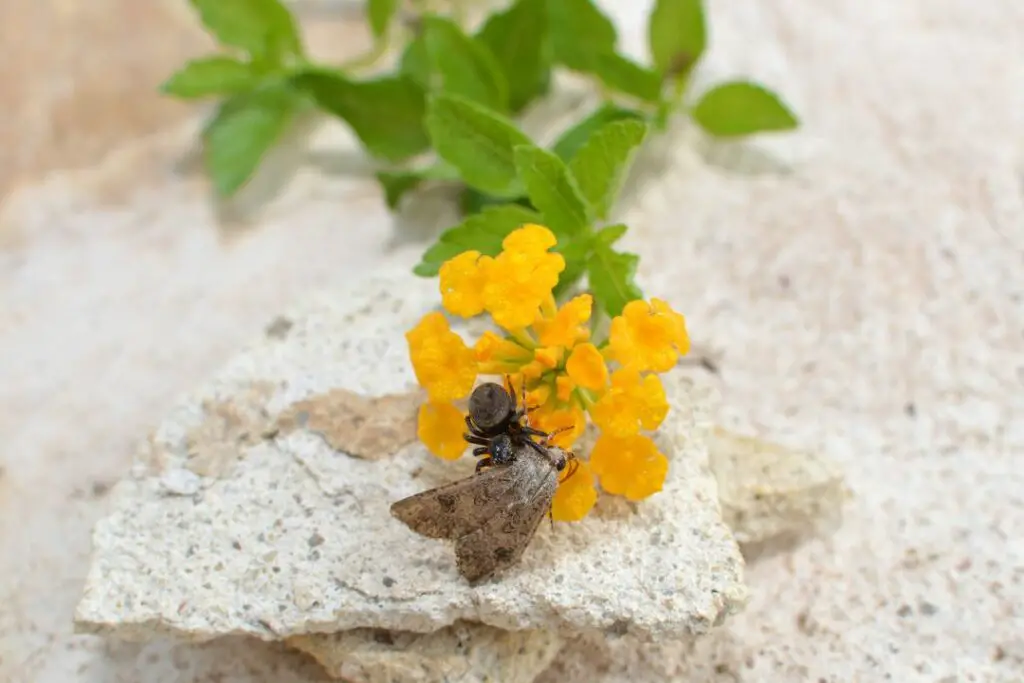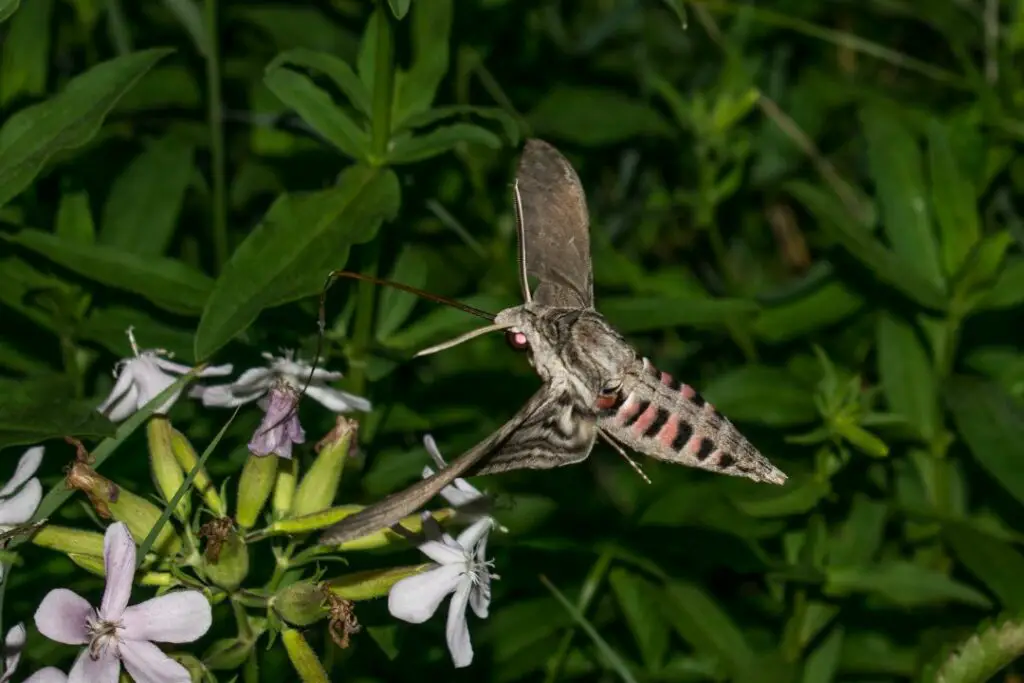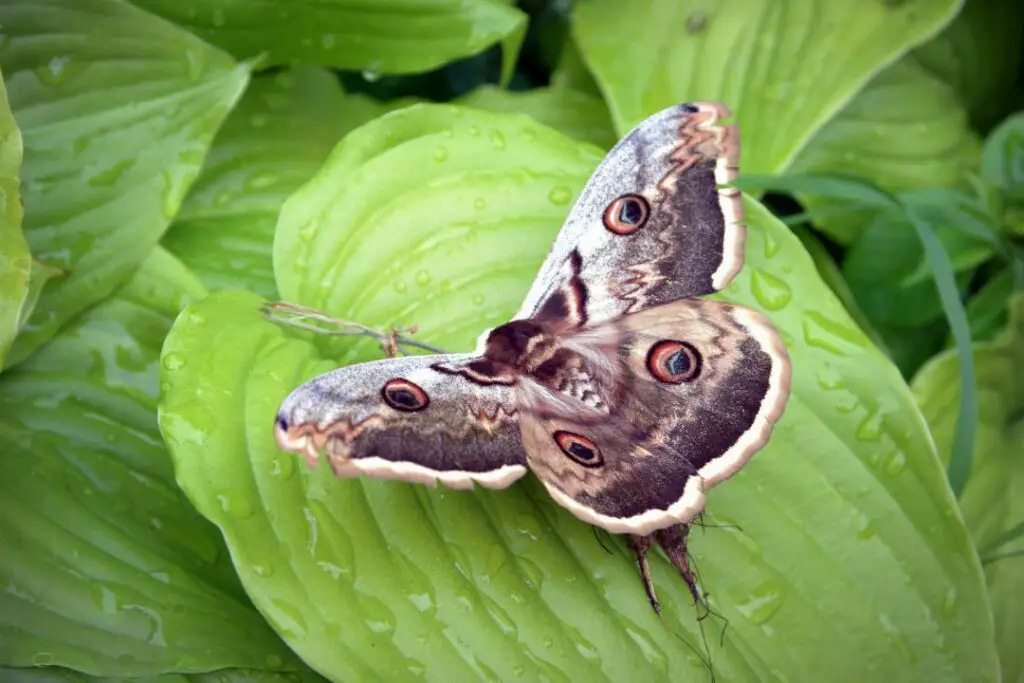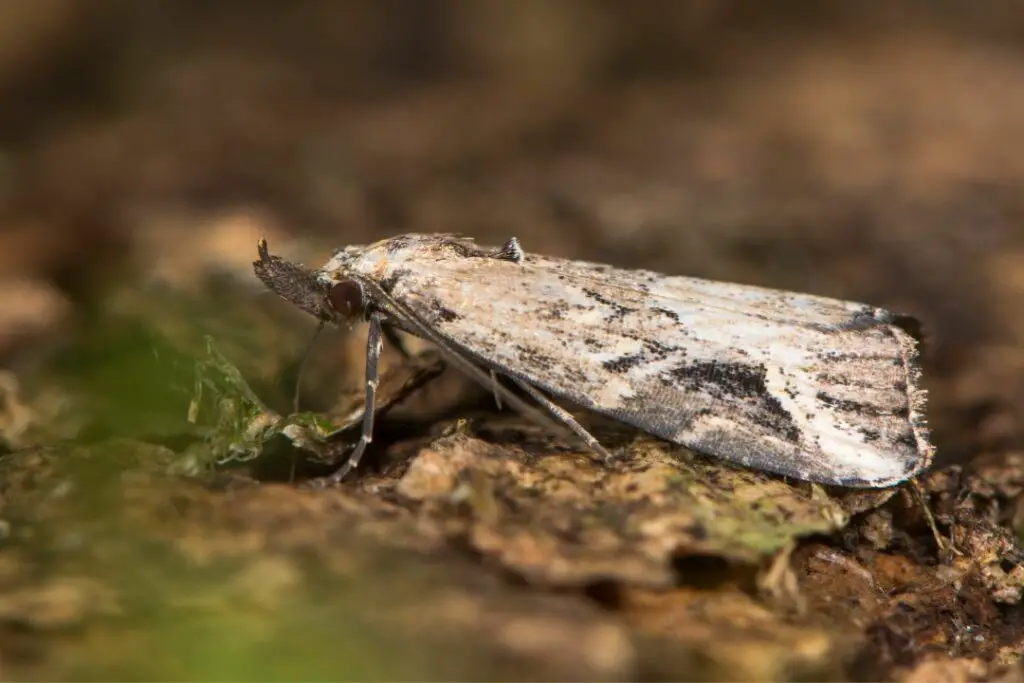Last updated on October 24th, 2023 at 03:15 pm
No, while some kinds of carnivorous moths eat other insects, we don’t know of any that prey on spiders in the wild.
The same can’t be said the other way around, though. Spiders will happily consume moths and caterpillars (their larval form).
We’ll explore this idea a little further to see if there is a chance of any moths turning the tables on one of their most common predators.
Caterpillars Are Much More Dangerous Than Moths
Moths won’t eat anything but nectar or liquids from puddles and raw fruit.
We are excluding the vampire moth who has developed a way of sucking up blood from mammals in an extraordinary evolution.
Many moth species aren’t even equipped with a proboscis to feed for their adult life, with their sole purpose being purely to mate.
But their larvae are a whole different story.
*Extra reading – Meet the spiders in your garden that hunt and eat bees.
The Hungry Caterpillars
While most caterpillars are content to munch on leaves, a few opt for a more protein-rich diet.
This takes the form of scale insect eggs, young wasp larvae, and even other caterpillars if insufficient food exists.
If some of these more ferocious species came across some spider eggs, there is a possibility they could eat them, but I couldn’t find any evidence, so this is pure theory.
That said, the chance of a female spider leaving its young and a caterpillar overpowering a spider is incredibly low.
So What Do Moths Eat All Day
Adult moths usually sip on nectar from flowers. Some are also attracted to ripe fruits, where they can suck up the sweet juices.
You can find any able moths sucking up any of the following with their proboscis:
- Flower nectar
- Ripe fruits
- Tree sap
- Animal dung (yes, you read that right)
You might be wondering, “Why does this matter to me?” Well, moths play a crucial role in pollination, just like their daytime counterparts, bees. Understanding their dietary habits can help us protect these essential creatures.
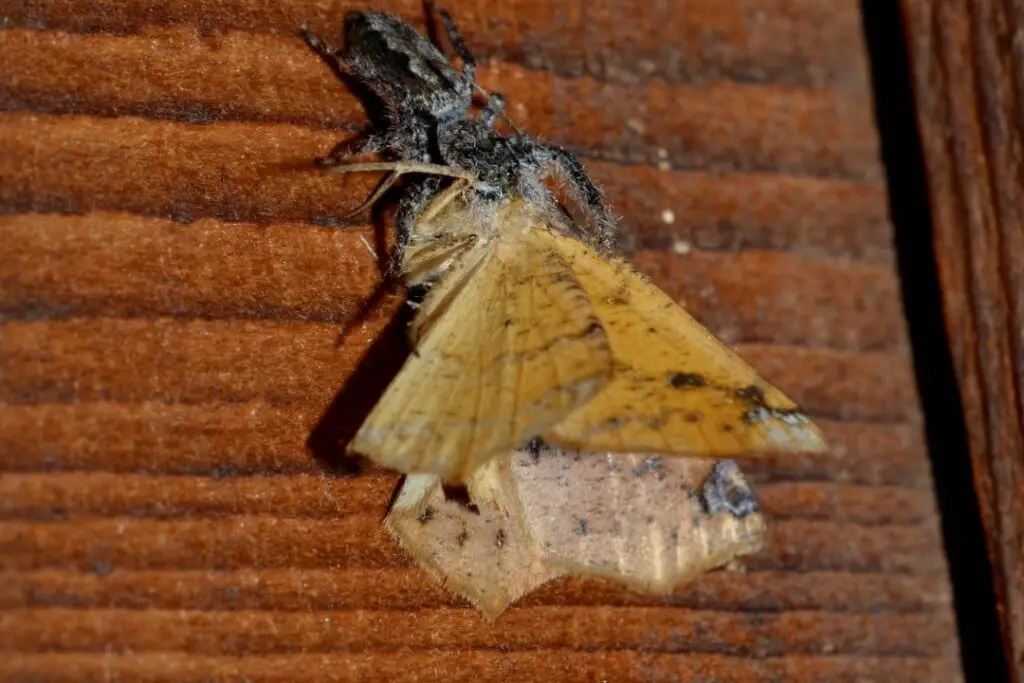
The Real Predators, Spiders
Have you ever wondered how spiders catch their fluttery, winged prey?
Moths are a common target. As nocturnal creatures, they’re often ensnared in spider webs.
The Spiders’ Hunting Arsenal
Spiders use various methods to catch their prey, from spinning intricate webs to actively hunting. The tools at their disposal include:
- Webs: Orb-weavers, funnel-weavers
- Ambush: Trapdoor spiders, jumping spiders
- Active Hunting: Wolf spiders
Orb weavers
Orb-weaver spiders are known for their iconic, spiral-shaped webs. These webs are sticky and act like a trap for flying insects, including moths.
Once a moth flies into the web, it gets stuck, and the spider quickly moves in to inject venom, paralyzing the moth.
Trapdoor spiders
These ambush predators create a silk-lined burrow with a camouflaged lid.
When a moth or other insect walks by, the spider bursts out of its trapdoor to seize it.
Zebra jumping spider
Jumping spiders don’t spin webs to catch prey. Instead, they use their excellent vision and jumping ability to pounce on moths.
They’ll patiently wait for a moth to land before leaping into attack with amazing accuracy.
In Conclusion
From the intricate webs of orb-weavers to the ambush tactics of trapdoor spiders, arachnids have evolved various methods to capture and kill moths.
We may yet see a moth or, more likely, a moth larvae that eat spiders or their eggs, but as of yet, the juries are still out.
Don’t miss our read about which animals kill and eat moths to meet more of the moth’s most fearsome predators.

